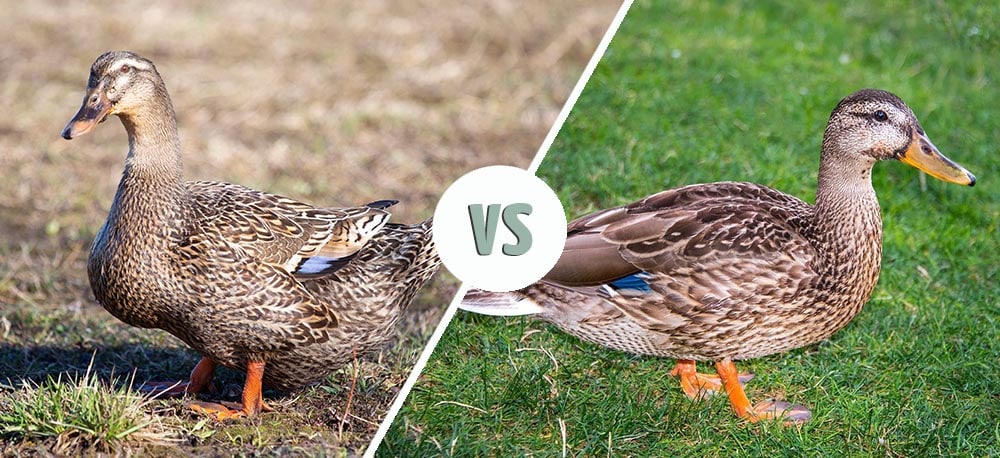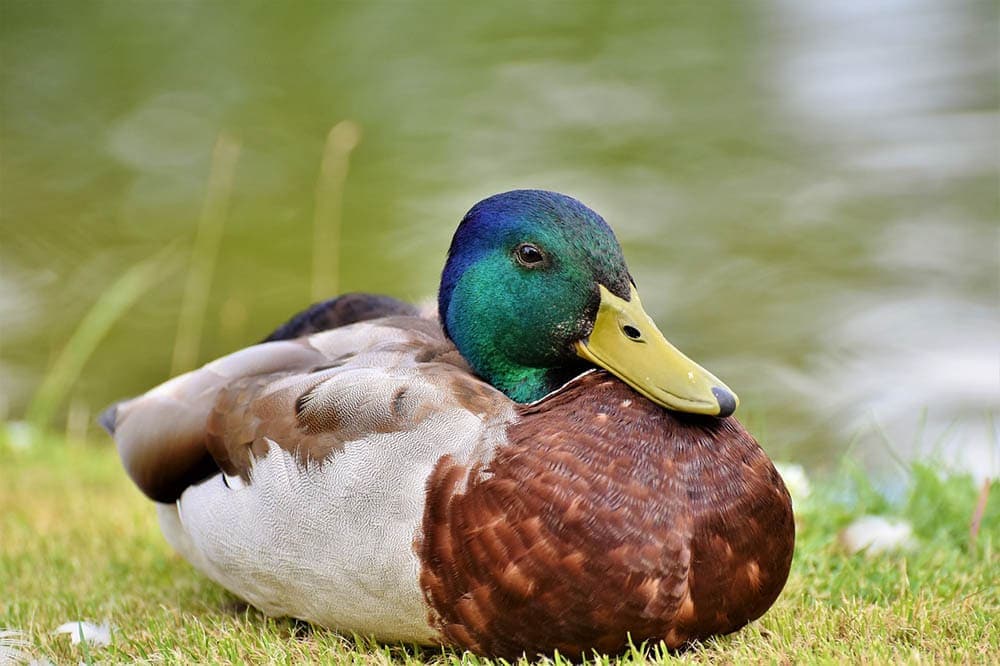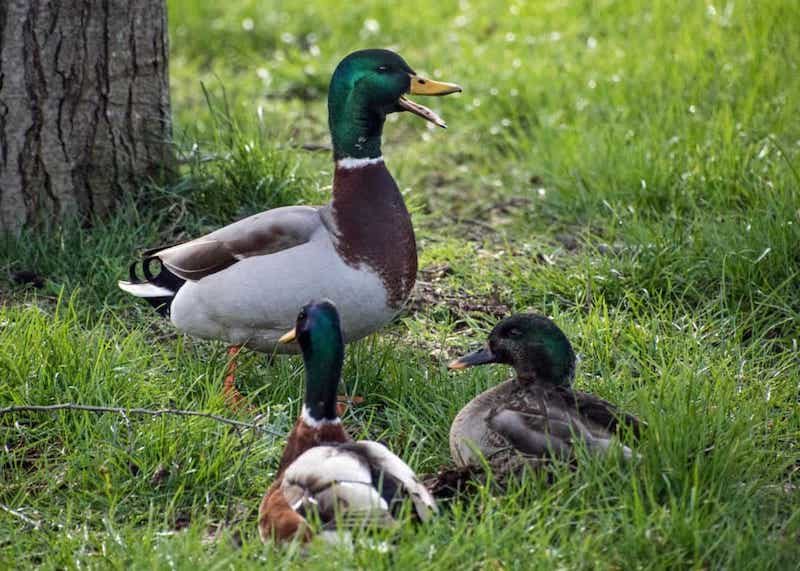Rouen Duck vs. Mallard: What’s the Difference?
Last Updated on

The Rouen Duck and Mallard have many similarities. Both are popular farm birds, whether you want meat or eggs. The two are also related, with the former giving rise to the latter. While both are domesticated, the Mallard is also a wild species. Even farm-raised specimens have some of these wild traits, which can affect your experience having them.
The Colonialists observed the abundance of Mallards going back to the 17th century.1 Overhunting nearly pushed them into extinction. Interestingly, farm-raised birds saved the species and paved the way for the selective breeding that brought us the Rouen Duck and other related species. That relationship has played a role in their respective personalities, uses, and ease of care.

Visual Differences

At a Glance
- Origin: France
- Size: 8–10 pounds
- Lifespan: 5–9 years
- Domesticated?: Yes
- Origin: North America, Europe, Asia; Introduced into New Zealand and Australia
- Size:5–3.5 pounds
- Lifespan: 5–10 years; Longer in captivity
- Domesticated?: Yes and no
Mallard Overview
The Mallard is a native species that is also a game animal. You’ll find it both as a wild bird and a domesticated one that is farm-raised. That adds another layer to the legal question. You can’t capture wild birds. Doing so will put you afoul of the game laws, which can carry some hefty fines. This species has also given rise to many domesticated varieties, such as the Rouen Duck.

Characteristics & Appearance
Female and male Mallards are strikingly different, making them easy to tell apart. The female has a streaked pattern of white, brown, and dark patches. It provides excellent camouflage when she is tending to her ducklings. The male has a rich, green-colored head with a white ring around his neck. His gray body includes a brown chest and wings with an iridescent blue patch or speculum on his wings.
Mallards are relatively docile because of their contact with people. You may even be able to hand-feed birds in parks. They are expressive with displays and vocalizations that make their moods evident. They also have elaborate courtship displays. You’ll often see them with other dabblers or surface-feeding species, such as Gadwalls and Northern Shovelers.
Uses
People raise Mallards primarily for their meat. Their eggs are larger but also stronger tasting. They are in touch with their wild side and may only lay seasonally. Mallards are also broody birds. It’s essential to get only farm-raised varieties. Many municipalities classify ducks as farm animals. That distinction will play a role in whether you can keep them on your property or not, regardless of their use.

Rouen Duck Overview
The Rouen Duck got its start in France, but it was Britain that selectively bred them to the bird you’ll see today. You’ll likely see variations in the spelling of the name, whether it refers to the town in which they originated or the Rhone region. Unlike the Mallard, this species doesn’t have a wild counterpart. Therefore, the only sources for ducklings are breeders who specialize in this bird.

Characteristics & Appearance
Some people may call Rouen Ducks Mallards because of the similarities in their appearance. At first glance, you may mistake the two. The striking difference is the size. The former is upward of three times the size. While Mallards can easily fly, Rouen Ducks have a tougher time getting off the ground because of their weight.
Drakes and hens share the same type of differences that you see in Mallards. It’s easy to distinguish the sexes. The male even has a green head. One of the characteristic differences is two stripes on the bird’s head as opposed to the single one that Mallards have. However, the Rouen Ducks have a blue speculum like the former.
Uses
As you may expect, people often raise Rouen Ducks for their meat because of their size and its delicious taste. They are average layers, producing up to 125 eggs a year. The bird has an attractive appearance that leads many to raise them for the show circuit. They are also quite docile, making them an excellent choice for pets.
What Are the Differences Between the Rouen Duck & Mallard?
We discussed the legality of owning game species like the Mallard. The best way to get either one is from a reputable seller. Both are friendly, making either one an excellent option if you have kids. The larger size of the Rouen Duck may make it more suitable for older children. However, the Mallard has a longer lifespan, with the oldest specimen recorded at 27 years and 7 months old.
You may notice subtle differences in their personalities between them. Mallards have the natural wariness you’d expect to find in a game species. After all, it’s a mistake that a prey animal can make only once. On the other hand, selective breeding has removed that trait in Rouen Ducks.
Consequently, the Rouen Duck is easier to tame than the Mallard.
The Mallard has the edge when it comes to adaptability. You have only to look at its global range to understand how well it is evolutionarily prepared for different habitats. While they prefer wetlands, they can exist just about anywhere in the Northern Hemisphere. As a domesticated bird, the Rouen Duck has had it relatively easy without the same environmental pressures as the Mallard.
The Rouen Duck matures more slowly than the Mallard, which isn’t unexpected, given its larger size. That’s also a function of a domesticated versus a wild species. Waterfowl are precocial. It’s imperative for wild species to help them evade predators. The stakes are usually higher in the wild than on the farm. You’ll also find the Rouen Duck in two sizes: standard and production.

Which One Is Right for You?
Mallards and Rouen Ducks make excellent pets. The main difference between the two exists in size. If space is an issue, you can’t go wrong with the former. You can raise either one for its meat. The Mallard will mature quicker if you want a fast turnover. The latter has the edge if you prefer a layer, although it isn’t the best option if you want a lot of eggs.
In either case, we suggest opting for the birds that appear healthiest with good weight distribution and a friendly temperament.
Featured Image Credit: (L) Lonny Garris, Shutterstock | (R) MOHANN, Pixabay
About the Author Chris Dinesen Rogers
Chris has been writing since 2009 on a variety of topics. Her motto with all of her writing is “science-based writing nurtured by education and critical thinking.” Chris specializes in science topics and has a special love for health and environmental topics, and animals of all shapes and sizes.
Related Articles:
10 Types of Hummingbirds in Arkansas (With Pictures)
8 Types of Hummingbirds in Nebraska (With Pictures)
5 Types of Hummingbirds in Idaho (With Pictures)
3 Types of Hummingbirds in Mississippi (With Pictures)
8 Types of Hummingbirds in Kansas (With Pictures)
5 Types of Hummingbirds in West Virginia (With Pictures)
5 Types of Hummingbirds in Ohio (With Pictures)
Where Do Nuthatches Nest? Nuthatch Nesting Habits Explained
